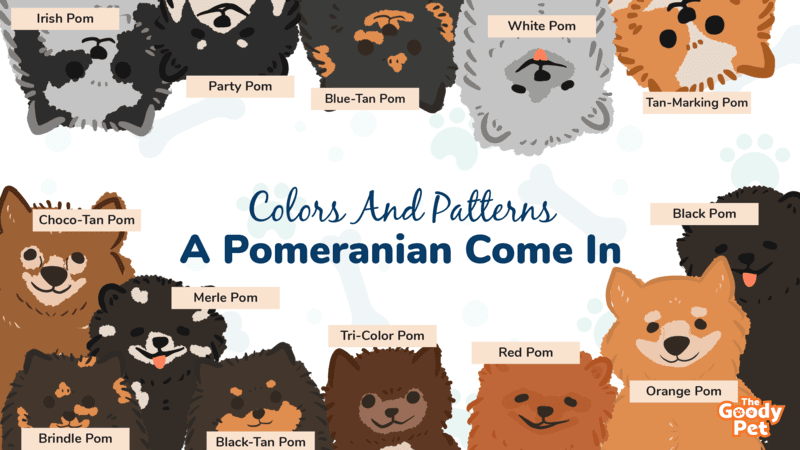Not many dog breeds actually look anything like their names or nicknames. Pomeranians on the other hand are the very embodiment of their pom-pom nickname with their small and fluffy bodies. And given how well they pull this aesthetic off, their popularity is unsurprising.
Pomeranians can come in fully orange, black, or the signature beaver color. Pomeranians can also come in beautiful tricolor combinations with brindle and merle markings, as well as the the majestic agouti and sleek sable coat patterns.
Without further ado, here are the 23 gorgeous varieties of a Pomeranian in all their glory.
23. Merle Pomeranian
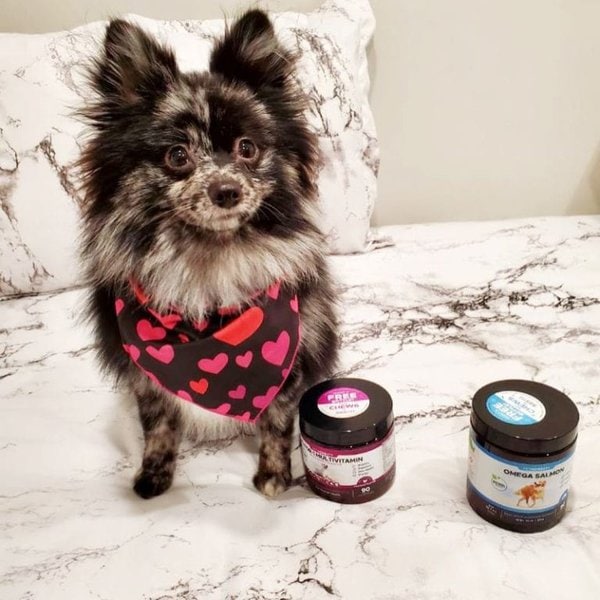
Merle Pomeranians are beautiful dogs with enchanting, mottled spots distributed irregularly all over the dog’s coat. The spots are of different shapes and sizes but are usually black in color over a lighter white or gray coat.
Merle Pomeranians also often have blue eyes but may sometimes have brown or hazel eyes.
This beauty comes at a price in some cases as the merle gene responsible for the markings is associated with eye and ear health issues.
22. Brindle Pomeranian
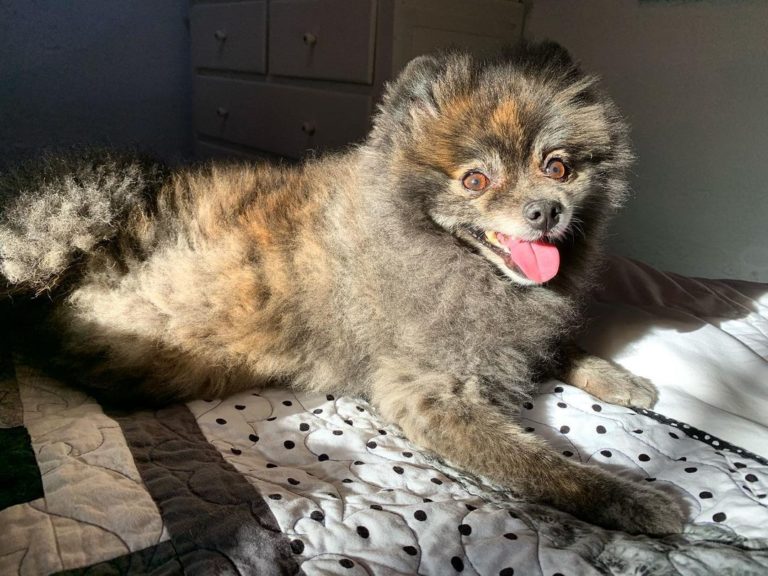
Brindle Pomeranians have distinct stripe markings all over the coat which gives them a subtle tiger-like aesthetic. The stripes are black in color and appear over tan or brown fur.
These stripes on Pomeranians can be difficult to distinguish especially with the dog breed’s long, fluffy coat. However, the markings can sometimes be very clearly seen especially on the back, paws, and forehead.
Brindle Pomeranians are also unique in that they are among the few Pomeranian variations that often demonstrate black face mask markings although not all brindle Poms have the trait.
21. Black Pomeranian
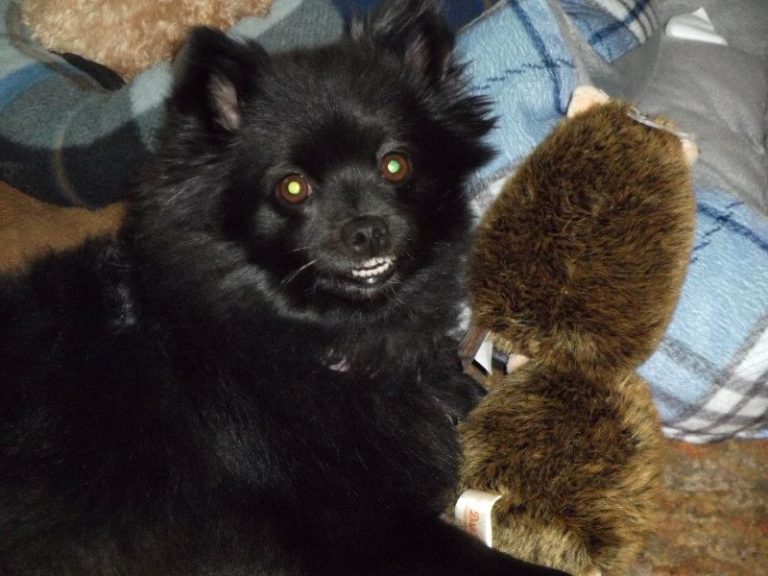
Black Pomeranians have an entire coat of solid black fur. This dark aesthetic goes very well with the long, fluffy coats that Pomeranians are popular for. It is important that the fur in this case is a solid shade of black.
Another important consideration when categorizing Pomeranians as all-black is the absence of markings. The Pomeranian should not have tan or white markings anywhere on their bodies. This includes tiny patches of fur on the paws or face.
20. Black & Tan Pomeranian
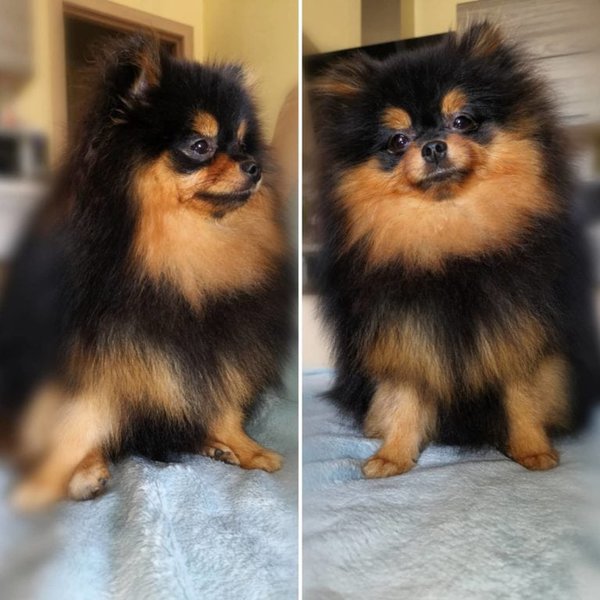
Black and tan Pomeranians are relatively common variations of the dog breed. They are known for their beautifully contrasted combination of a mainly black coat and tan markings.
The tan markings on a black and tan Pomeranian follow a fairly predictable pattern. The tan markings can be found on the face around the snout and as single dot marks above each eye.
You may also find tan fur on the Pomeranian’s neck, chest, bellow, and paws.
19. Blue Pomeranian
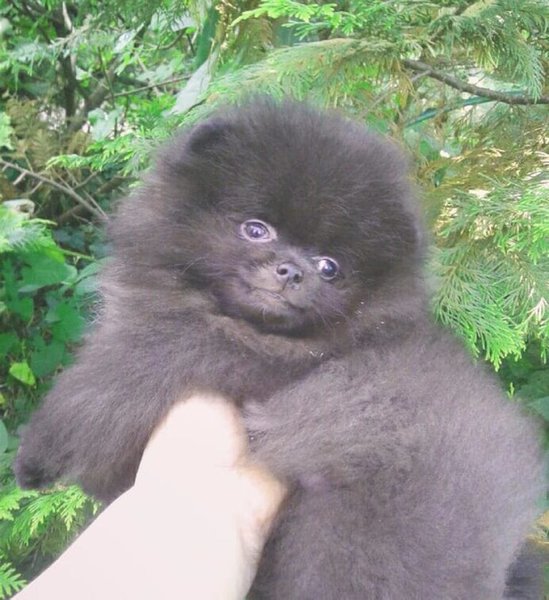
Blue is a watered down shade of black fur. In Pomeranians, as with other dogs, this trait occurs when Poms with genes for black fur also happen to have dilutions genes. The latter group of genes water down the intensity of the black fur leaving the blue shade.
As with the all-black Pomeranian variety, it is important that the blue Pomeranian should not have any tan or white markings anywhere on their body.
18. Blue & Tan Pomeranian
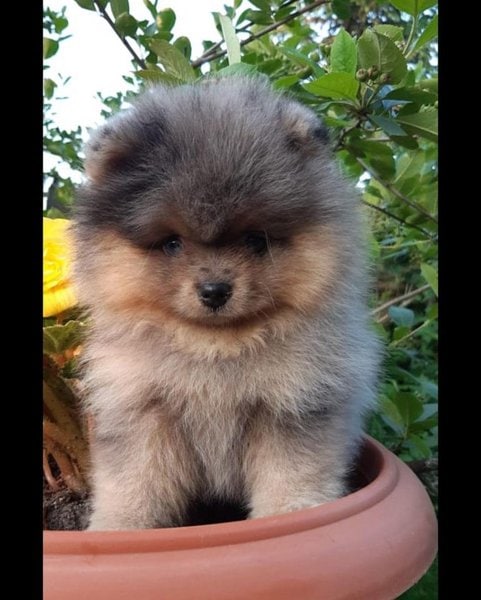
Blue and tan Pomeranians have a mostly blue coat with tan markings. The tan markings follow the same somewhat predictable pattern of distribution and are found on the face, neck, chest, and paws.
The blue part of the coat may vary from one blue and tan Pomeranian to another. Some have dark, powder gray shades while others may have a lighter, silvery-blue shade of blue as the main coat color.
17. Chocolate Pomeranian
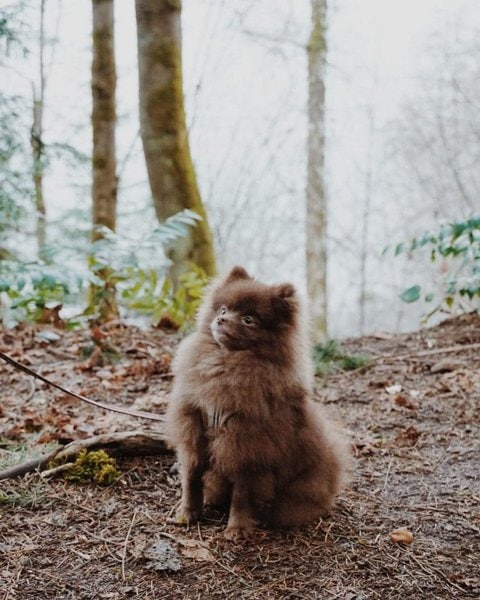
The chocolate Pomeranian has fur in a dark, chocolate shade of brown. This has a bit of a matte or dull finishing to it which perfectly complements the fluffy aesthetic that Pomeranians already have.
This all-chocolate coat also gives the Pomeranian a teddy bear-like aesthetic which is why this variation of the Pomeranian dog breed is so popular.
The rare chocolate Pomeranian also stands out with its distinct chocolate brown nose characteristic.
16. Chocolate & Tan Pomeranian
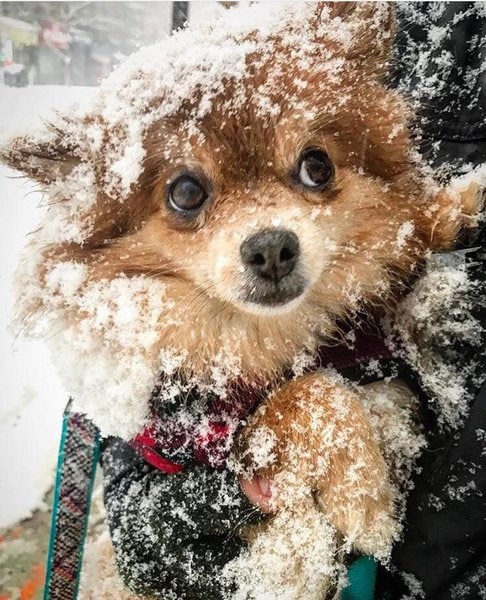
The chocolate and tan Pomeranian is a variation of the chocolate Pom with tan markings. The tan markings are similar in distribution to those on a black and tan or blue and tan Pomeranian appearing on the chest, neck, and face.
The effect is a subtle but beautiful contrast between the two shades of brown.
In some cases, the chocolate and tan Pomeranian will also have some white markings. These appear as tiny and almost negligible patches usually on the face, chest, or paws.
15. Chocolate Tri-Colored Pomeranian
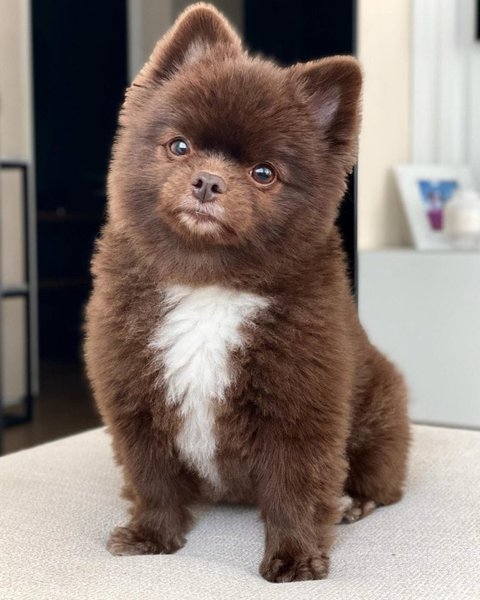
The chocolate tri-colored Pomeranian is one of the two main tricolor variations of the dog breed. As the name suggests, the main color on chocolate tricolor Pom has chocolate-brown fur covering most of the coat. The other two colors are tan and white.
The tan fur on a tricolored Pomeranian typically covers the least amount on the coat. The markings are often adjacent to the chocolate fur on the torso. They may also appear on the snout and as dots over each eye.
The white fur on the other hand appears as markings on the face, neck, chest, paws, and sometimes the belly.
14. Cream Pomeranian
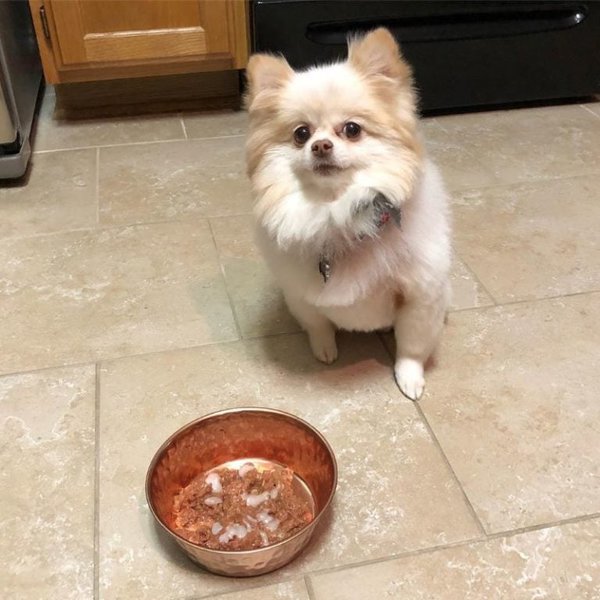
The cream Pomeranian is one of the most common variations of the Pomeranian breeds. The fur is a very light shade of brown which from a distance and in bright light may appear white or off-white.
Cream Pomeranians are often confused for other shade variations like orange or white. The best way to describe the cream variation is a midpoint between these two as it is darker than white but also significantly lighter than orange or tan Pomeranians.
13. Orange Pomeranian
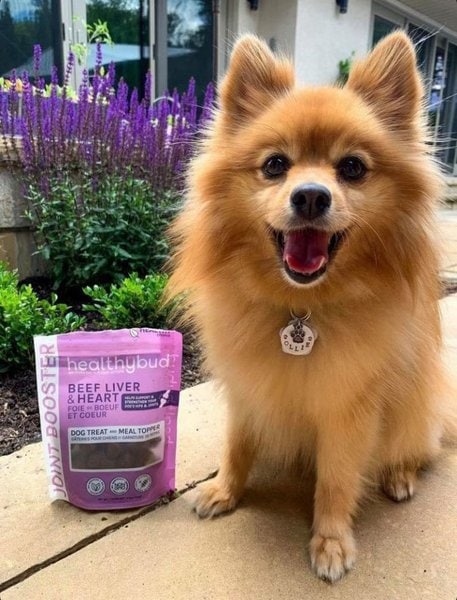
The orange Pomeranian is arguably the most common of the variations of Pomeranians. The coat on these doggies is a tan-like shade of brown. What makes it different from the tan markings is the richer orangish undertones that give the coat a darker color.
This contrast between the orange and tan is best appreciated in orange Pomeranians that happen to have tan markings on their coats.
Despite being so common and popular, orange Pomeranians are often just as expensive as most other rarer coat variations of the Pomeranian breed.
12. Red Pomeranian
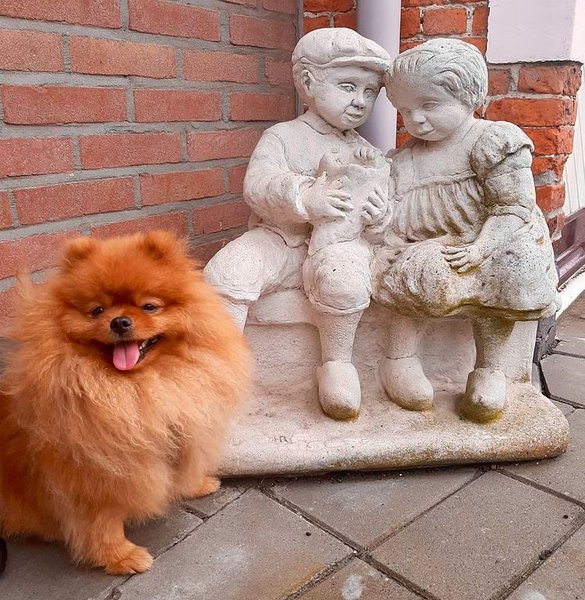
The red Pomeranian is another variation of the dog breed that has a distinct shade of brown. In this case, the brown coat has a darker, rusty red quality to it. The solid red fur covers the entire body and there should be no markings in another color.
Red Pomeranians were made popular by Queen Victoria who had one of her own and they have maintained this hype decades down the line.
11. White Pomeranian
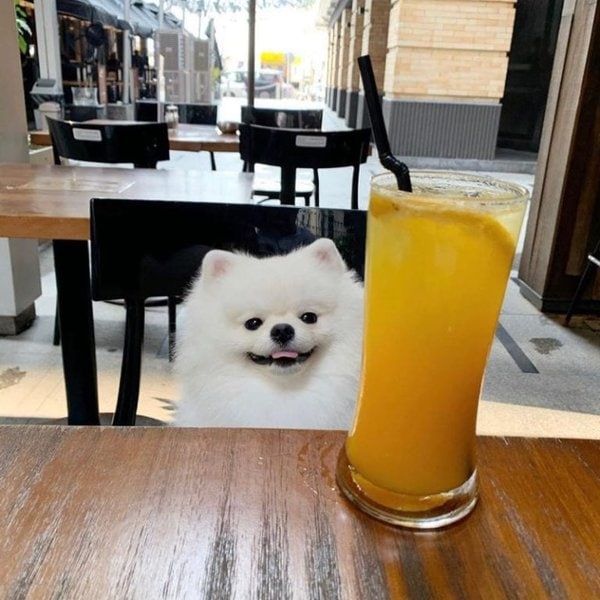
White Pomeranians can best be described as little, fluffy clouds with reds and dark eyes. The thick, long, and fluffy coat is complemented perfectly by the all-white fur for this aesthetic.
White Pomeranians should not be confused for the Albino variety. The best way to tell the two apart is that regular white Pomeranians have dark-colored eyes like brown or black as well as a black nose.
White Pomeranians also tolerate sun exposure better than Albino variations.
10. Agouti (Wolf) Pomeranian
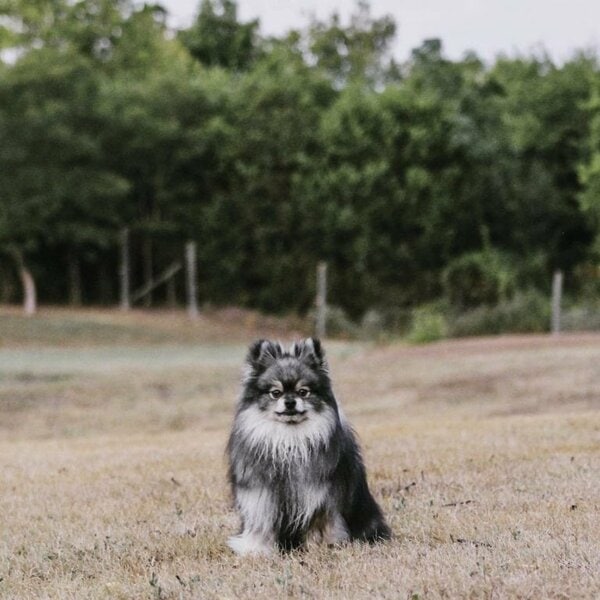
Agouti Pomeranians are a very unique and enigmatic variation of the Pomeranian dog breed. They are known for having a coat with varying shades of solid, gray fur. This gives them a wild, wolf-like aesthetic which is why they are also known as wolf Pomeranians.
In some cases, the Agouti Pomeranian may have sable tip markings in which case they are referred to as Agouti Sable Pomeranians. They may also have white and/or tan markings on their coats.
9. Tricolor Pomeranian
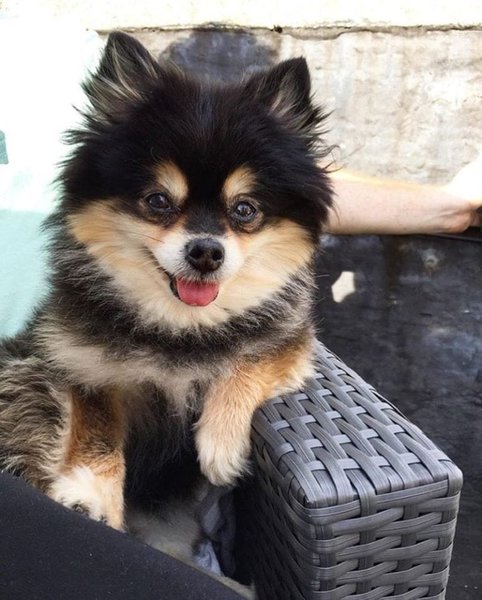
Tricolor Pomeranians have a combination of 3 colors. These include white parts, a shade of either solid or watered down black, and a shade of brown.
The distribution of these colors varies greatly from one tricolor Pomeranian to another.
A tricolor Pom-pom may have mainly white fur with tan and black markings. The fur could also be mainly black or blue with tan and white markings distributed usually on the head, chest, and paws.
8. Full Body
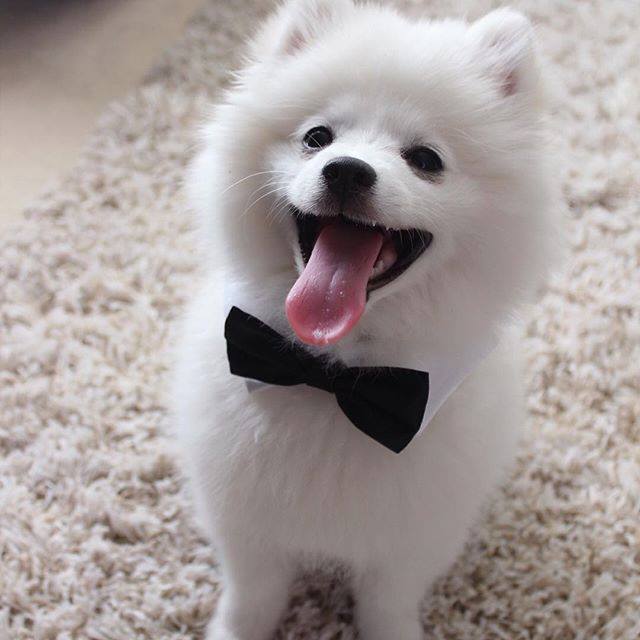
Full body Pomeranians have the entire coat covered by a single shade of fur. It is important that there are absolutely no patches on the fur of any other color other than the primary coat shade.
Some of the most common full body colors on Pomeranians include white, black, blue, chocolate, red, and cream.
While markings are not allowed in this category of Pomeranians, there may be different shades of the same main color on different parts of the Pom’s body.
7. Parti-Color Pomeranian

Particolor Pomeranians have white markings on their coats. These markings typically cover less than 50% of the coat with the rest being a darker color like orange, red, chocolate, black, blue, or even a combination of some of these colors.
While Particolor Pomeranians have white fur covering less than 50% of the coat, they are different from regular white markings on Pomeranians in that they cover a larger area. The white patches are also not limited to any part of the Pomeranian’s body.
6. Irish Pied Pomeranian
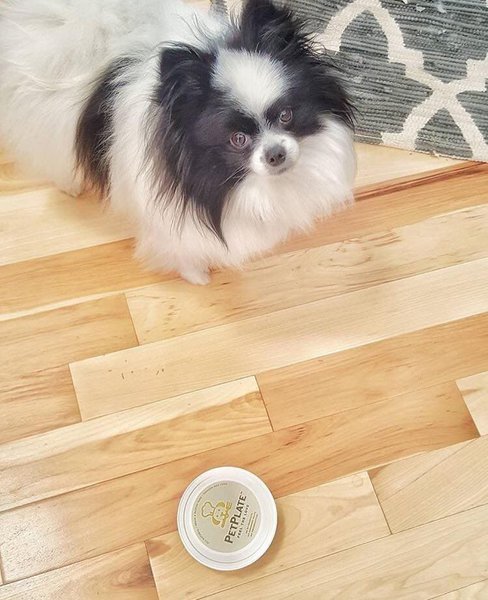
Irish Pied Pomeranians are another pattern variety of the Pomeranian known for their white markings. In this case, the white fur covers more than 50% of the coat. This technically makes the other colors present like blue, black, chocolate, or tan the markings.
With Irish Pied Pomeranians, the darker toned patches of fur appear mainly on the head. These include markings around the face, ears, snout, and even the neck of the Pomeranian.
5. White Markings
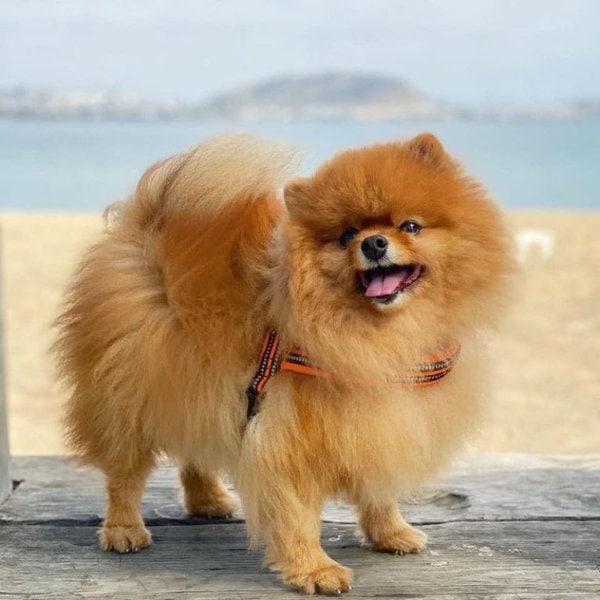
White markings on Pomeranians are very common and can be found in most coat variations of the dog breed. They cover a very small area of the coat which is not only less than 50% but also much less than the coverage by part-colored Pomeranians.
The white markings in these Pomeranians also typically follow a predictable pattern. They can mostly be found on the snout, neck, and paws as small patches of white fur.
4. Tan Markings
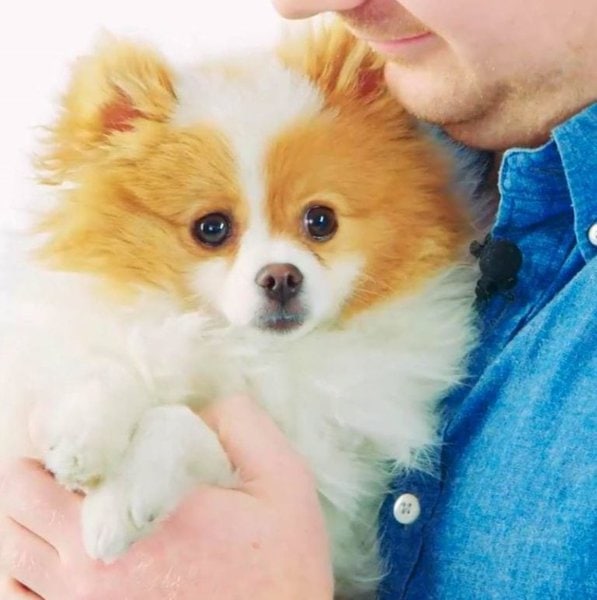
Tan markings on Pomeranians are another common minority marking pattern where tan fur covers a small area of the coat. Like white markings on Pomeranians, the tan patches have a somewhat predictable distribution.
These tan markings on Pomeranian dogs will usually appear on the face around the snout and as individual dots over each eye. They also appear on the paws and as small patches on the neck or chest area.
3. Sable Pomeranian
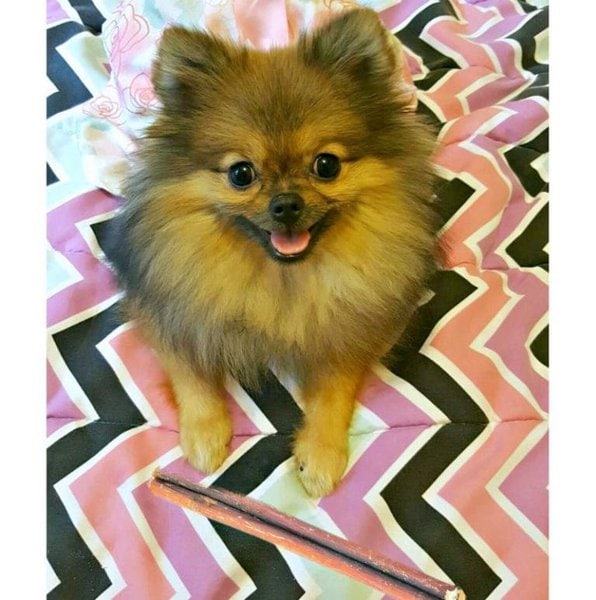
Sable markings appear as black tips on fur of a lighter color on the Pomeranian. It is best appreciated on Pomeranians with shades of brown like red, cream, beaver, and orange Poms. Sable markings are also commonly found on Agouti Pomeranians.
The sable markings do not always occur on every part of the Pomeranian’s body. In some cases, grooming where the tips are trimmed off may make it difficult to pick out this trait.
2. Beaver Pomeranian
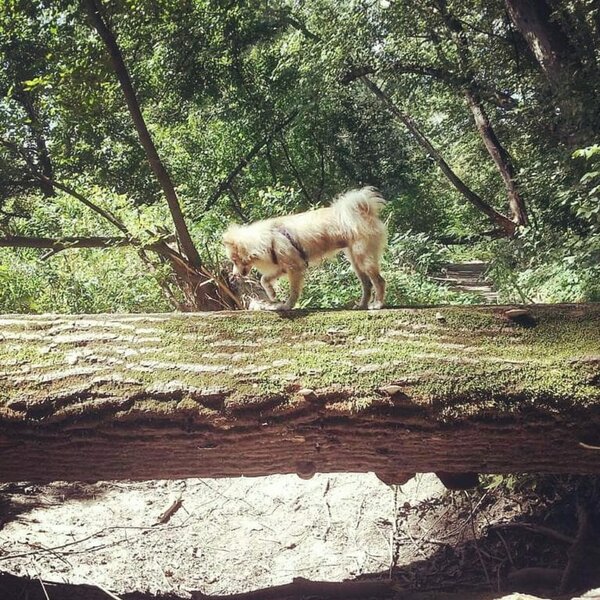
Beaver Pomeranians have a very light shade of brown which is comparable to a pale cookie. This is why they are sometimes referred to as biscuit Pomeranians and they really do look the part.
The light shade of brown on Beaver Pomeranians is often mistaken for similar variations like the cream or orange Poms.
The Beaver Pomeranians also often have distinctly light brown or hazel eyes as well as a brown nose.
1. Black Mask Pomeranian
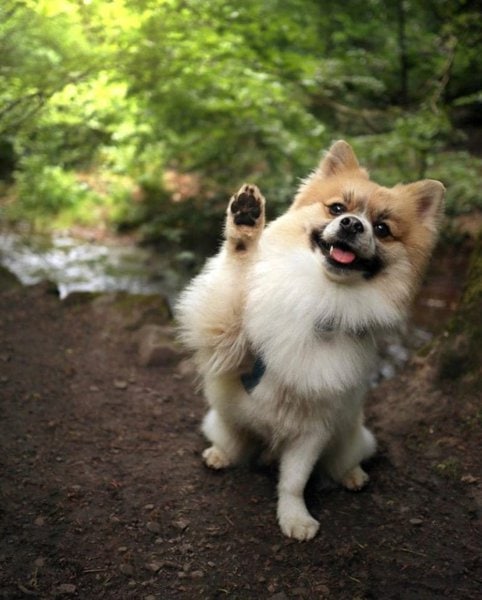
Pomeranians with black masks have black fur as markings on their faces. The black fur is usually limited to the snout but may also be seen above or around the dog’s eyes.
Black mask markings on Pomeranians are best appreciated with lighter colored variations of the dog breed. This includes tan Pom-poms, predominantly white Poms, and even rare variations like the Agouti Pomeranian.
However, it is generally a very rare finding within this dog breed.
Related Questions
What Is The Most Common Color Of A Pomeranian? The two most common colors that Pomeranians come in are tan and orange. The genes responsible for these coat types are common and more dominant than rarer variations of the Pom-pom. Despite being so common, tan Pomeranians and orange Pomeranians are just as expensive as rarer types if not more expensive.
What Is The Rarest Color Of Pomeranians? The tricolor Pomeranian is the rarest coat color type of the Pomeranian dog breed. In addition to being super rare, tricolor Poms are also among the most expensive variations in this dog breed. The reason why tricolor Pomeranians are so rare is that the genes responsible for the trait are themselves rare and recessive.
What Color Pomeranian Is The Most Expensive? Some of the most expensive Pomeranians are the black Pomeranian, white Pomeranian, lavender Pomeranian, and blue Pomeranian varieties. Some of these like the black, lavender, and blue options are expensive because they are super rare. The white Pom on the other hand is pricey due to the hype for the fluffy white dog aesthetic.

